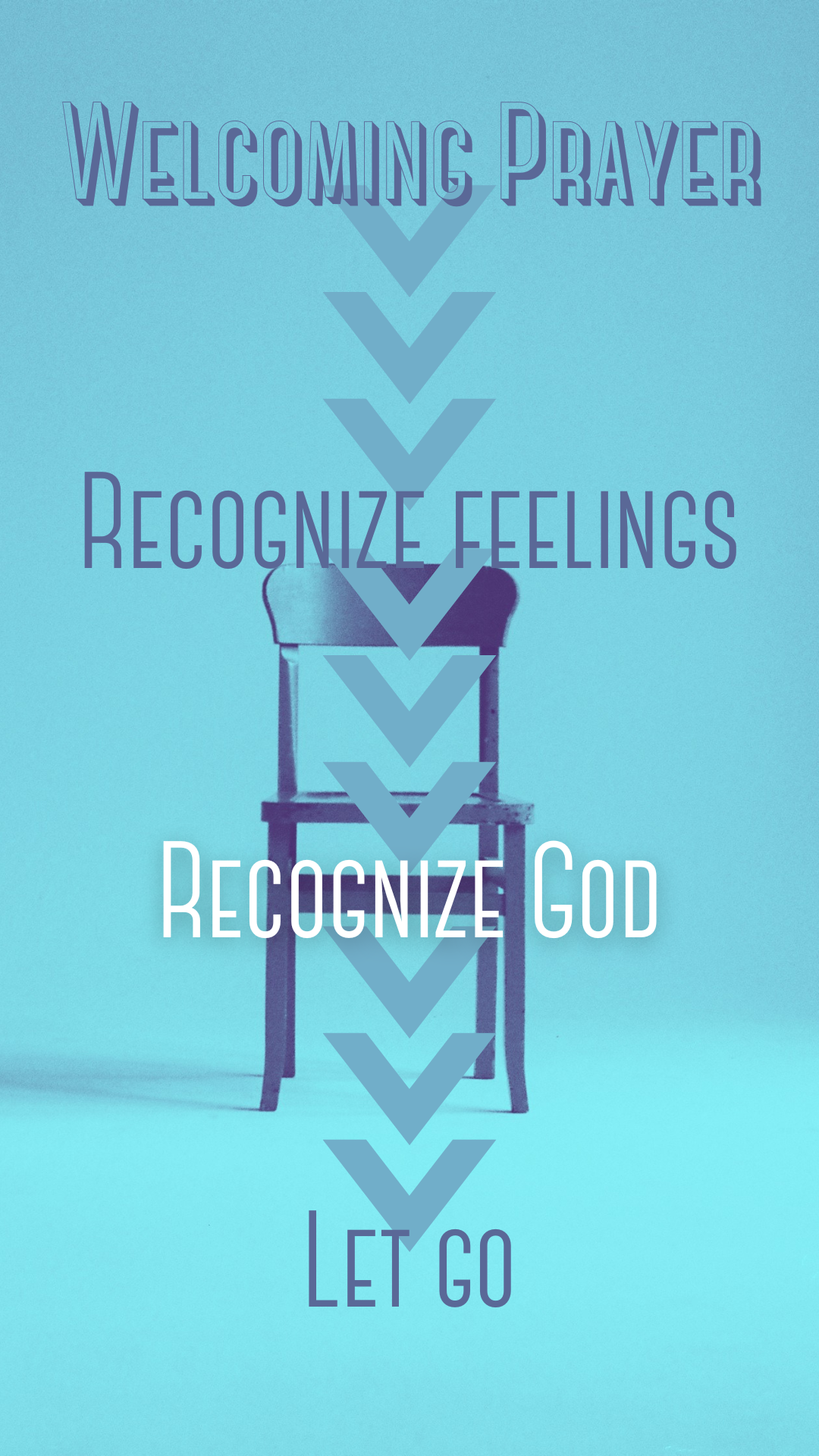The three steps of Welcoming Prayer

Are you here because you’re looking for a connection to something beyond yourself?
Spiritual practices help us feel our connectedness to the world beyond ourselves. Through them, we awaken to the reality that we are not alone and that we are connected to something bigger than what we see happening through our own eyes. In a way, our eyes are opened to see beyond ourselves.
Without this change in perception, we often find ourselves spiraling into feelings of alienation, separation and loneliness. And that leads to anxiety and feelings of malaise.
The Welcoming Prayer is a practice that disrupts feelings of separation, loneliness, lost-ness (if that’s a word), in our days. And it is something you can put into use daily to interrupt your day with the spiritual. Hopefully, this helps re-orient us to the Divine presence in our midst no matter what else we’re doing.
The practice of Welcoming Prayer
Mary Mrozowski originally put Welcoming Prayer together in the late 20th Century. Mary was one of the founders of Contemplative Outreach--which your can learn more about at contemplativeoutreach.org. She based the practice on the 17th century French spiritual classic Abandonment to Divine Providence by Jean-Pierre de Caussade.
In essence, the Welcoming Prayer is a method of consenting to God’s presence and action in our physical and emotional reactions to the stresses of life. When we feel stuck on an anxious feeling, or a feeling of defeat, it is helpful to retreat into this practice as a way to disrupt the cycles of rumination. These are the thoughts that are triggered when negative things happen, like “I always mess up… Success isn’t for me… I’m an imposter and pretender…” Welcoming Prayer derails those thoughts before they become parts of our narratives.
How to do Welcoming Prayer
The Welcoming Prayer consists of three parts or movements. First, we recognize what we’re feeling. Secondly, we welcome these feelings as a means for recognizing God’s presence. Thirdly, we let go of a need to control and simply embrace the moment.
Recognizing feelings.
Allow yourself to feel this moment… What’s going on in your body? Where are you holding tension? What’s distracting in your mind? … Sit with that for a moment.
Welcome whatever it is that you’re experiencing. Name it to yourself. And note that Welcoming Prayer focuses on emotional states and reactions. So you may be carrying a cold or allergies right now. Instead of just recognizing that you have a stuffy nose or sore throat, turn your attention to how those physical challenges inspire you emotionally: Are you frustrated by them? Do they have you feeling drained? Are you fed up with having to deal with stuff?
Rev. Tyler Sit shared the Welcoming Prayer on the Compass podcast. He actually says “hello” to his sensations: “Hello anxiety, I see you. Hello fatigue, I recognize you, too.”
Recognizing God.
Just as we welcome our feelings, we welcome God. We invite God into the moment. A helpful invitation might sound like: “Hello Dear One, I recognize you are present in this moment, too.”
It might even help to invite and admit God’s presence in all the sensations you’ve just mentioned: “God, you are with me in my anxiety…Spirit, you are with me when I’m fatigued…”
Letting go.
Perhaps the most economic way to let go is to release your named sensations to God: “God, I give you my fatigue. Spirit, I give you my anxiousness…”
Mary Mrozowski also provided a prayer for closing out Welcoming Prayer.
“I let go of my desire for security and survival.
I let go of my desire for esteem and affection.
I let go of my desire for power and control.
I let go of my desire to change the situation.”
What are you hoping to let go of? Share with us and see other spiritual practices for connection in our Rethink Church Facebook Group.




